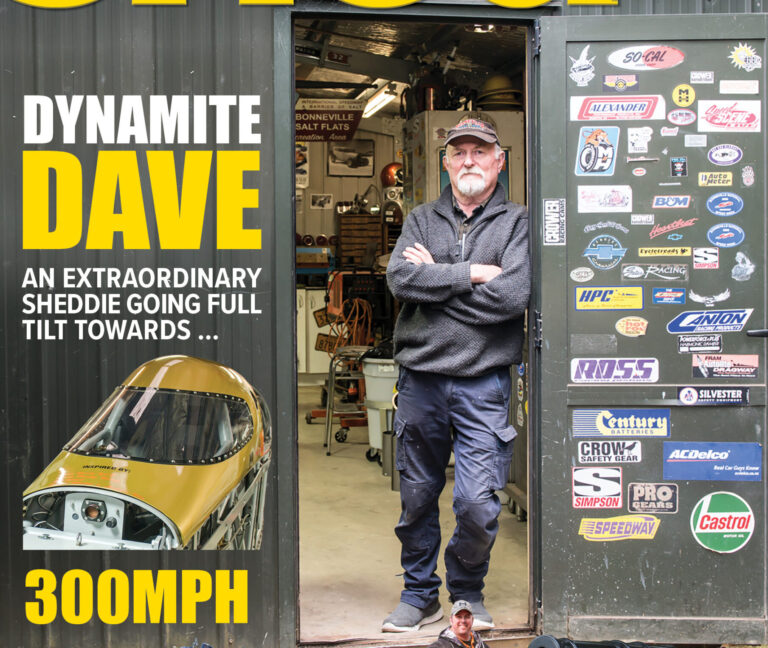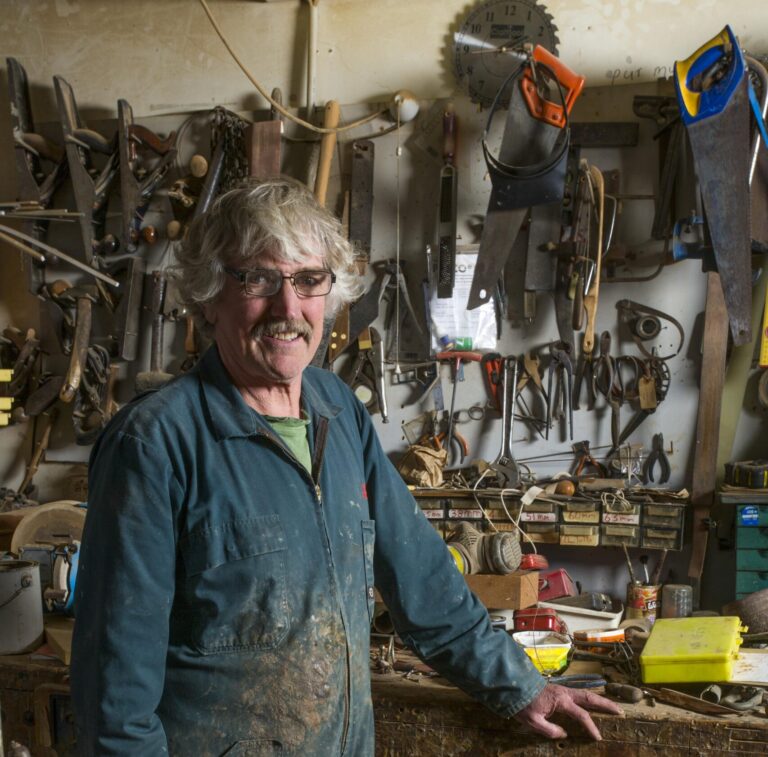Full tilt with Dynamite Dave.
Dynamite Dave Alexander is a self-taught doer, with an eye for detail, unquestionable discipline, and a passion for motorsports. He’s been making things since he was a nipper, and has never stopped. He was raised on a remote Hawke’s Bay farm, where the shed was his university.
Dave says he “grew up doing it”, working alongside his father Neil, learning how to keep the property and equipment maintained and running. His first job was welding all the farm gates. His next was putting in a box-section chassis for a 1942 Willys Jeep, which served as the farm’s workhorse.
At 18, Dave commenced his first customisation of his Mk ll Zephyr, installing a V8, dual headlights, and Vauxhall tail lights. Since then, he has restored, driven, and raced an impressive list of classic muscle cars, scratch-built stocks, rods, and record-breaking Bonneville salt cars.
Now – at 70-something – this multitasking, project-a-holic is closing in on his latest quest: to break 262mph (422kph) at Bonneville in his shed-built, RB-powered Lakester – a project that has been close to a decade in development.
Dave says, “I guess I could be playing golf or in the pub. But you have to do something to get you out of bed in the morning, to keep the old man out.”















